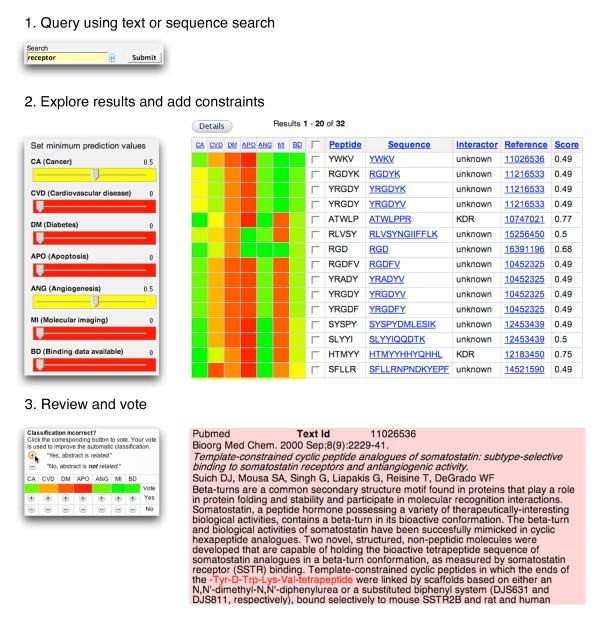Figure 1.
Screenshot of the retrieval heat map. As an example to illustrate the utility of our system, we show how the user can search for peptide sequences that bind to receptors with known affinities, and are related to cancer and angiogenesis. The user searches for "receptor" and finds 4222 results, which is far too many to sort through manually. The heat map in the results view is displayed together with additional columns (sequence, interactor, reference, and score). These columns are either automatically populated or manually curated [1]. For example, an unknown entry in the interactor column means that the biological interactor of the peptide has not yet been determined by manual curation of the associated abstract. The heat map shows how each entry is annotated (by vote ratios) or automatically predicted (if no votes exist) to relate to each category. To prioritize the results, the user selects the entries related to cancer and angiogenesis by setting the threshold for the "cancer related" category to 0.5, which reduces the result set to 477 entries, and for the "angiogenesis related" category to 0.5, which reduces the result set further to 32 entries. By clicking on the BD column header, entries are sorted by the availability of binding data. Clicking on the top hit (YWKV) leads to an abstract with the peptide sequence that satisfies the user constraints and the initial query. The sequence corresponds to one of the analogs of somatostatin, many of which are used in cancer treatment and diagnosis, as well as inhibitors of angiogenesis. In the entry view a voting box is offered for the user to cast a vote to either confirm or reject the offered classifications.

